AFCEN’s editorial activity consists in writing and validating for publications codes and other technical documents. AFCEN’s continuously follows and updates its publications.
Technical documents associated to codes content:
-studies to complete and develop certain code domains,
-criteria to develop code rules foundations,
-guides going with code use.
AFCEN currently publishes seven codes.

There are several reasons for updating AFCEN codes: the need to incorporate experience feedback, technical progress due to scientific breakthroughs and R&D works, changes to regulations and standards, and extension of the subject matter covered by the codes.
In civil works and fire protection domains dedicated versions specific to EPR design (ETC-) came before RCC-codes.
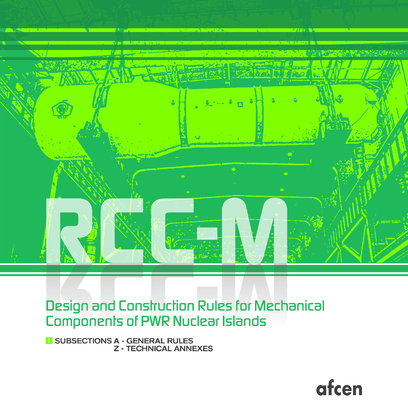
RCC-M
RCC-M : Design and construction rules for mechanical components of PWR nuclear islands
Purpose and scope
AFCEN’s RCC-M code concerns the mechanical components designed and manufactured for pressurized water reactors (PWR).
It applies to pressure equipment in nuclear islands in safety classes 1, 2 and 3, and certain non-pressure components, such as vessel internals, supporting structures for safety class components, storage tanks and containment penetrations.
RCC-M covers the following technical subjects:
- sizing and design rating,
- choice of materials and procurement.
- fabrication and control, including:
- associated qualification requirements (procedures, welders and operators, etc.),
- control methods to be implemented,
- acceptance criteria for detected defects,
- documentation associated with the different activities covered, and quality assurance.
The design, manufacture and inspection rules defined in RCC-M leverage the results of the research and development work pioneered in France, Europe and worldwide, and which have been successfully used by industry to design and build PWR nuclear islands. AFCEN’s rules incorporate the resulting feedback.
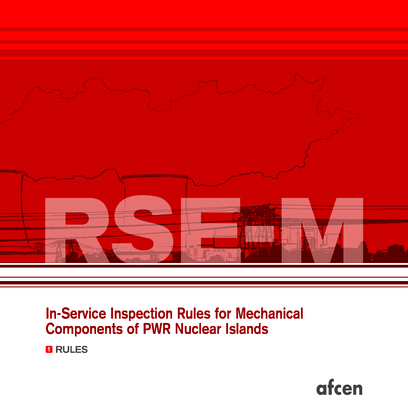
RSE-M
RSE-M : In-Service Inspection Rules for Mechanical Components of PWR Nuclear Islands.
Purpose and scope
The RSE-M code defines in-service inspection operations. It applies to pressure equipment used in PWR plants, as well as spare parts for such equipment.
The RSE-M code does not apply to equipment made from materials other than metal. It is based on the RCC-M code for requirements relating to the design and fabrication of mechanical components.
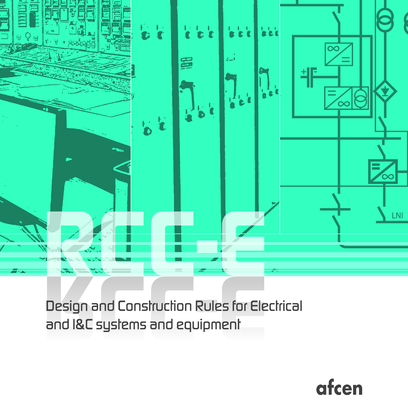
RCC-E
RCC-E : Design and construction rules for electrical equipment of PWR nuclear islands
Purpose and scope
RCC-E describes the rules for designing, building and installing electrical and I&C systems and equipment for pressurized water reactors.
The code was drafted in partnership with industry, engineering firms, manufacturers, building control firms and operators, and represents a collection of best practices in accordance with IAEA requirements and IEC standards.
The code’s scope covers:
- architecture and the associated systems,
- equipment engineering and environmental qualification for normal and accidental conditions including seismic events,
- materials engineering and the qualification procedure for normal and accidental environmental conditions,
- facility engineering and management of common cause failures (electrical and I&C) and electromagnetic interference,
- testing and inspecting electrical characteristics,
- quality assurance requirements supplementing ISO 9001 and activity monitoring.
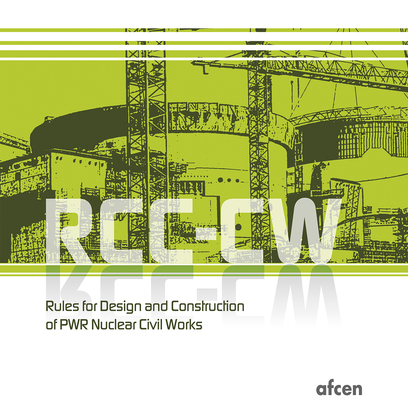
RCC-CW
RCC-CW : Design and construction rules for civil works in PWR nuclear islands
Purpose and scope
RCC-CW describes the rules for designing, building and testing civil engineering works in PWR reactors.
It explains the principles and requirements for the safety, serviceability and durability of concrete and metal frame structures, based on Eurocode design principles (European standards for the structural design of construction works) combined with specific measures for safety-class buildings.
The code is produced as part of the RCC-CW Subcommittee, which includes all the parties involved in civil engineering works in the nuclear sector: clients, contractors, general and specialized firms, consultancies and inspection offices.
The code covers the following areas relating to the design and construction of civil engineering works that play an important safety role:
- local cases and combinations,
- geotechnical aspects,
- reinforced concrete structures and galleries,
- prestressed containments with metal liner,
- metal containment and pool liners,
- metal frames,
- anchors,
- concrete cylinder pipes,
- paints and coatings,
- containment leak tests.
The RCC-CW code is available as an ETC-C version specific to EPR projects (European pressurized reactor).
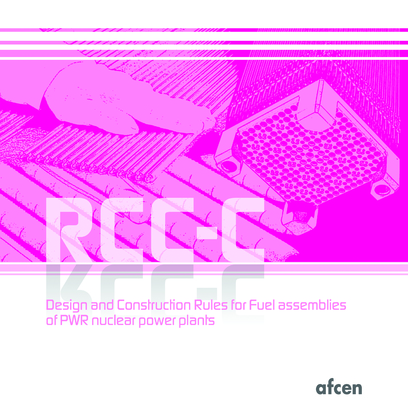
RCC-C
RCC-C : Design and construction rules for fuel assemblies of PWR nuclear power plants
Purpose and scope
The RCC-C code contains all the requirements for the design, fabrication and inspection of nuclear fuel assemblies and the different types of core components (rod cluster control assemblies, burnable poison rod assemblies, primary and secondary source assemblies and thimble plug assemblies).
The design, fabrication and inspection rules defined in RCC-C leverage the results of the research and development work pioneered in France, Europe and worldwide, and which have been successfully used by industry to design and build nuclear fuel assemblies and incorporate the resulting feedback.
The code’s scope covers:
- fuel system design, especially for assemblies, the fuel rod and associated core components,
- the characteristics to be checked for products and parts,
- fabrication methods and associated inspection methods.
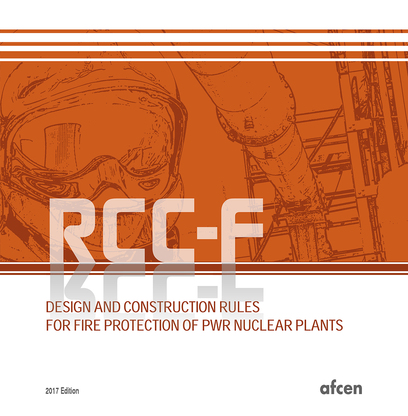
RCC-F
RCC-F : Design and construction rules for PWR fire protection systems
Purpose and scope
The RCC-F code defines the rules for designing, building and installing systems used in a PWR nuclear plant for managing the risk of fire outbreak inside the facility in light of the nuclear hazards involved and thereby control the fundamental nuclear functions. The code also defines the rules for analysing and justifying the means used to create the safety demonstration.
This code’s target readership is therefore:
- suppliers of fire protection equipment,
- engineering firms responsible for designing, building and installing the buildings constituting a PWR,
- engineering firms responsible for analysing fire hazards and establishing the safety demonstration from a fire hazard perspective,
- engineering firms responsible for designing the means to prevent and protect against fires and mitigate the effects of a fire outbreak,
- laboratories carrying out qualification testing of fire protection equipment,
- Nuclear Safety Authorities responsible for approving the safety demonstration.
The code defines fire protection systems within a finite scope of service buildings in a light water nuclear power plant.

RCC-MRx
RCC-MRx: Design and construction rules for mechanical components in high-temperature structures, experimental reactors and fusion reactors
Purpose and scope
The RCC-MRx code was developed for sodium-cooled fast reactors (SFR), research reactors (RR) and fusion reactors (FR-ITER).
It provides the rules for designing and building mechanical components involved in areas subject to significant creep and/or significant irradiation. In particular, it incorporates an extensive range of materials (aluminum and zirconium alloys in response to the need for transparency to neutrons, Eurofer, etc), sizing rules for thin shells and box structures, and new modern welding processes: electron beam, laser beam, diffusion and brazing.